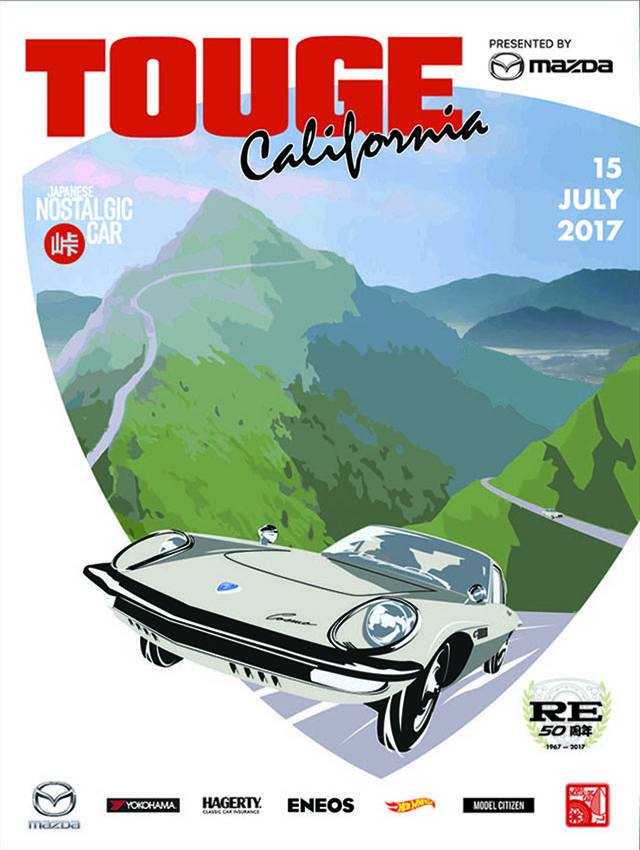Forty years after its debut, the Honda HP-X concept has undergone an extensive restoration. It was originally shown at the 1984 Turin Auto Show and is billed as Honda’s first concept car (though that is debatable). Regardless, it’s a fascinating car that predicted many automotive trends, and helped pave the way for the NSX.
The HP-X was the brain child of former Honda CEO Nobuhiko Kawamoto. Long before he had ascended to the top spot and fresh out of graduate school, Kawamoto was hired by Honda in 1963 to work on engine development for the T360 and S500. Soon Kawamoto was designing race engines, and helped develop a Formula 2 powerplant. The engine was supplied to Brabham, leading the team to eleven consecutive victories in the 1966 season.
Honda pulled out of single-seat racing in 1968 and Kawamoto moved onto lead engine design for production cars like the 1300 and Life. However, the pull of racing never left him, and when Honda began eyeing a return to auto racing in the late 70s, Kawamoto designed another F2 engine. This time it was supplied to the UK’s Ralt Racing, which promptly won the 1981 European Formula Two Championship.
Prompted by his success, Kawamoto began thinking about a sports car built around one of his F2 engines. He struck a deal with renowned Italian design house Pininfarina to style and build the one-off concept. The result was the Honda Pininfarina eXperimental, or HP-X.
Honda of America describes the HP-X as “the company’s very first concept car.” That may or may not be true depending on your perspective. Prior to the HP-X, Honda did show concepts that were either based on modified production cars, like an extendable camper for a Life hatchback, or far-out vehicles like the three-wheeled XXX (we’ll delve into these in the coming weeks). If you’re counting four-wheeled vehicles not based on any production car, then the HP-X is indeed the first.
The centerpiece of the HP-X was a midship 2.0-liter 24-valve DOHC V6 based on Kawamoto’s F2 engine. Multi-valve and twin-cam technology was considered exotic stuff for its time, but the design would presage Honda’s incredible racing-inspired engines by the end of the decade.
Instead of traditional doors, entry to the HP-X was gained by a removable Perspex canopy similar to that of a fighter jet. Rather than flowing down into the bodywork, it extended rearward to become an air brake activated from the cockpit. Honda says the HP-X “employed advanced aerodynamics including ‘ground effects'”. Whether that means downforce-generating bodywork isn’t described in detail.
What they do specify is the HP-X’s use of the latest and greatest materials, including honeycomb panels, carbon fiber, and Kevlar. Inside, an “Electronic Drive Support System” predicted the use of GPS, real-time telemetry, and sonar road condition warnings.
For most of the last 40 years the HP-X sat dormant, but Pininfarina restored it ahead of its Pebble Beach showing. Its presence at this most exclusive of car shows marks several milestones. It’ll be the HP-X’s first appearance in North America, as well as its first major appearance since 1984. It also marks the first time a Japanese car has been displayed at the Pebble Beach Concours in 50-plus years when it is entered in the Wedge-Shaped Concept Cars and Prototypes Class.
As for Kawamoto, he eventually became head of F1 engine development, ushering in Honda’s second F1 age. The program would eventually grow into the dominant force behind the McLaren-Honda MP4s of the Senna and Prost era. In 1986 Kawamoto became president of Honda R&D to oversee all product development. During this time he planned the NSX and shepherded it to production, becoming the fourth president of Honda Motor in the year of its debut, 1990.
The restored Honda HP-X will premiere at the Pebble Beach Concour D’Elegance on August 18, 2024.
Additional Images:
Images courtesy of Honda.












































The future never looked so bright as it did in the 80s’ These kinds of shapes were what little boys like me lusted after at the time.
I spy a Honda Beat and a CRX. The car itself is 80’s poster art.
What an inspiring design, I think we’re gonna see concept cars more like this in the future after the crossover hype fades.
From what I’ve seen the advent of electric motors and the impact it has on the packaging of cars is wreaking havoc in the minds of car designers, we’re living in a wild west era of design opportunities and challenges where some of the more established brands are desperately trying to keep the grille alive (think BMW or Audi putting mega nostrils/goatees on their cars that are 80% blocked of black plastic plates)
Hyundai and Mercedes on the other hand are in their awkward hit or miss teen phase of car design with the Ioniq line starting off bad with a faux grilled prius wannabe followed by the Ioniq 5 hitting their edgy phase after playing a little too much Cyberpunk2077 and the Ioniq 6 shows the first signs of design maturity. The Mercedes EQS on the other hand, while not bad looking is struggling to express brand identity in a design where the grille is no longer the focal point but they’re doing OK.
Stellantis however came out swinging and ABSOLUTELY NAILED IT with the new charger/challenger (really I could write an essay about how awesome it is)
Now what does all this have to do with a 1984 Honda prototype?
Packaging is the name of the game! Just like the funky Nissan NX-21 shown a while back and the Chevy Corvair were interesting experiments in terms of packaging I’m starting to see a trend in modern cars were frunks are taking shape as grocery compartments and lower front profiles, bigger glasshouses and simpler shapes are beginning to come back after the reign of ‘Angry citizen-blob crumpled NPC design’
Anyways, I’m optimistic now, time to jump off the soapbox put on my most 80’s windbreaker jacket and enjoy the summer breeze!
hey, my comments don’t appear, that’s a bummer.
Found it! It was sent to spam. Just post a heads up here if your original comment disappears and someone will dig it out.
So sad to see what the future of automotive styling could have been.
Talk about under rated names in the automotive world, Nobuhiko Kawamoto oversaw the golden age of Honda and touched almost every one of their best cars.
Great to see this prototype again receiving the love and attention it deserves. What a great design. I recall dreaming of it in 1984 when I was 10, starring at a small photo in the Portuguese Automobile Club magazine and thinking how cool was it. 🙂 Nice memories.
What exactly happened after the 80s to switch us to the darkest timeline?
I own a Sera and am already getting baked in the sun, fan bake if you turn on AC. imagine sitting in this!